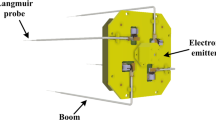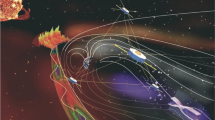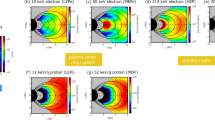Abstract
The Rosetta spacecraft (S/C), which is planned to meet comet 46P/Wirtanen in 2011, will carry a set of five wave and plasma instruments (i.e. the Rosetta Plasma Consortium). This is to measure the cometary plasma properties from the minimum value of activity of the comet to its maximum value at perihelion. The mutual impedance probe, MIP, is one of those (Trotignon et al., 1999) five.
Similar content being viewed by others
References
Béghin, C.: 1995, Radio Sci. 30, 307.
Béghin, C. and Kolesnikova, E.: 1998, Radio Sci. 33, 503.
Storey, L.R.O., Aubry, M.P. and Meyer, P.: 1969, in: J.O. Thomas and B.J. Landmark (eds.), Plasmas Waves in space and in Laboratory, University Press Edinburgh 1, 303.
Trotignon, J.G. et al.: 1999, MIP-RPC: the Mutual Impedance Probe in the Rosetta Plasma Consortium. ESA SP-1165.
Author information
Authors and Affiliations
Rights and permissions
About this article
Cite this article
Geiswiller, J., Trotignon, J., Béghin, C. et al. Rosetta mission mutual impedance probe modelling: the short and long Debye length plasma cases. Astrophysics and Space Science 277, 317–318 (2001). https://doi.org/10.1023/A:1012237931968
Issue Date:
DOI: https://doi.org/10.1023/A:1012237931968




